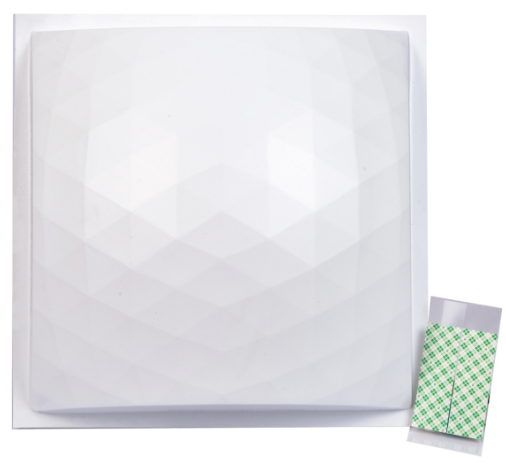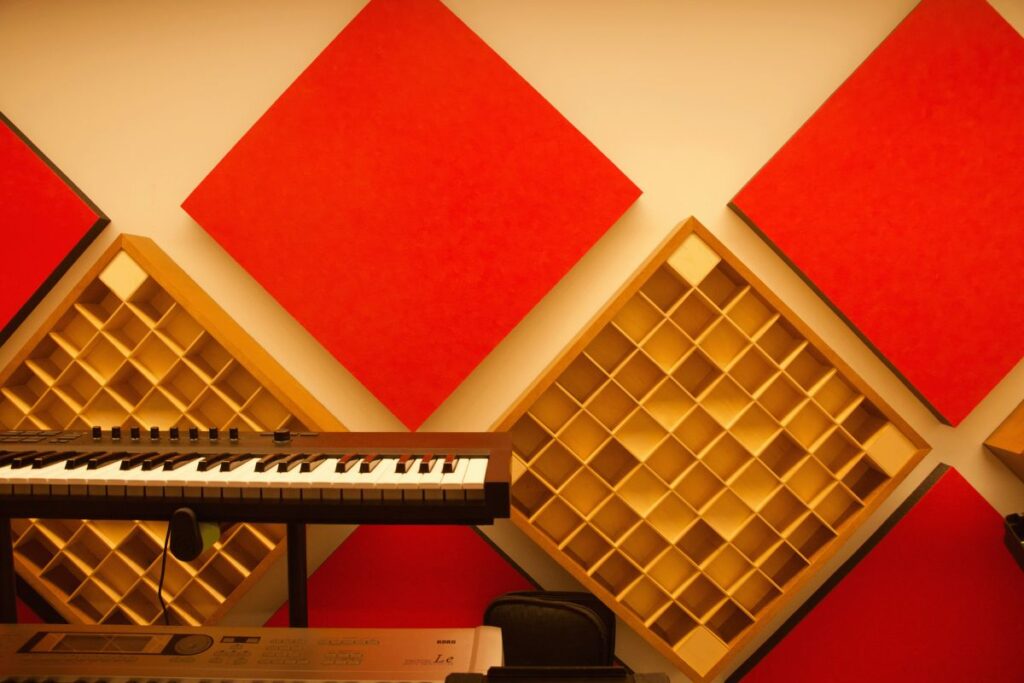Acoustic diffusers are devices often found in recording studios, concert venues, and similar spaces. In this article, we’ll explore what acoustic diffusers are, their purpose, and their features. Let’s dive in!Acoustic diffusers are devices often found in recording studios, concert venues, and similar spaces. In this article, we’ll explore what acoustic diffusers are, their purpose, and their features. Let’s dive in!
What is an acoustic diffuser and what is its purpose?
An acoustic diffuser is a device with a non-uniform surface used to scatter sound waves within a room. It reflects sound irregularly and diffusely, helping the sound dissipate more quickly and reducing reverberation.
The redistribution of acoustic energy prevents it from being fully absorbed (as it would with an acoustic panel) and retains the acoustic energy in the environment. This adds vibrance and impact to the music at play.
It’s common to combine the use of absorptive panels with diffusers, as relying solely on absorptive elements can create a dry, lifeless acoustic environment. Nevertheless, installing diffusers in a poorly sounding space alone does not guarantee significant improvements.
Types of acoustic diffusors
Acoustic diffusers are categorized according to their shape and the mathematical and acoustic principles behind their design. Let’s take a look at the two main types of diffusers: poly-cylindrical and Schroeder diffusers, which can also be broken down into further subtypes
Poly-cilindrical
This type of diffuser features a structure made up of cylinders or curved surfaces that scatter sound in multiple directions, which is why they are also called multi-directional diffusers. As the name suggests, the sound diffusion is not focused in a single point, but is evenly distributed across a large part of the studio.

Key characteristics of poly-cylindrical Diffusers:
- Cylindrical surfaces: These diffusers typically consist of a series of cylinders arranged so that sound waves hit them and scatter in different directions
- Effectiveness in mid and high frequencies: These diffusers are especially effective at scattering sound waves in the mid and high frequency ranges. The curvature of the cylinders helps redirect sound to various areas in the space
- Aesthetic design: Besides their acoustic function, poly-cylindrical diffusers often feature aesthetically smooth designs, making them easy to fit seamlessly into different types of spaces.
Schroeder diffusers
Schroeder diffusers were developed by engineer and composer Manfred Schroeder in the 1970s. They were specifically designed to disperse sound waves uniformly in various directions. This type of diffuser is well known for its ability to diffuse sound reflections in a way that avoids distinct echoes or unwanted reflections.

Key characteristics of Schroeder diffusers:
- Geometry based on numerical sequences: Designed using mathematical sequences (like the Fibonacci sequence or prime numbers) to create varying depths in the diffuser’s channels, enabling efficient sound dispersion.
- Modular structure: Typically rectangular panels with cavities or “wells” of different depths.
- Objective: Their primary goal is to diffuse sound, preventing energy from concentrating in certain areas and improving clarity while reducing negative effects like “hot spots” or sound reflections.
This type of diffuser can also be categorized into three more specific types based on their design features::
-
- MLS Diffuser (Maximum Length Sequence): This diffuser’s key technical feature is the length of its longitudinal bands. The diffuser’s channels are based on the MLS sequence, a pseudo-random algorithm that determines the height placement of each longitudinal band.
- QRD (Quadratic Root Diffuser): This type of diffuser is notable for its geometric organization, typically composed of recessed squares of varying depths. This setup scatters sound waves in different directions, preventing strong reflections and creating a more natural, balanced listening experience. As a result, it is the most commonly used diffuser in studios.
- PRD (Primitive Root Diffuser): Although it looks similar to the QRD, this diffuser uses a different sound dispersion algorithm. PRDs are better suited for reducing echoes and acoustic energy build-ups.

How to choose the best type of acoustic diffuser for your studio
The most important factor when choosing a diffuser is how it affects the elimination of acoustic issues, based on the recalculated sound curve of the room using the mathematical model applied. Different spaces present different sound distributions, often emphasizing bass frequencies, echoes, and so on. Therefore, expert advice is essential for addressing each specific case effectively. For more information, do not hesitate to contact us.



